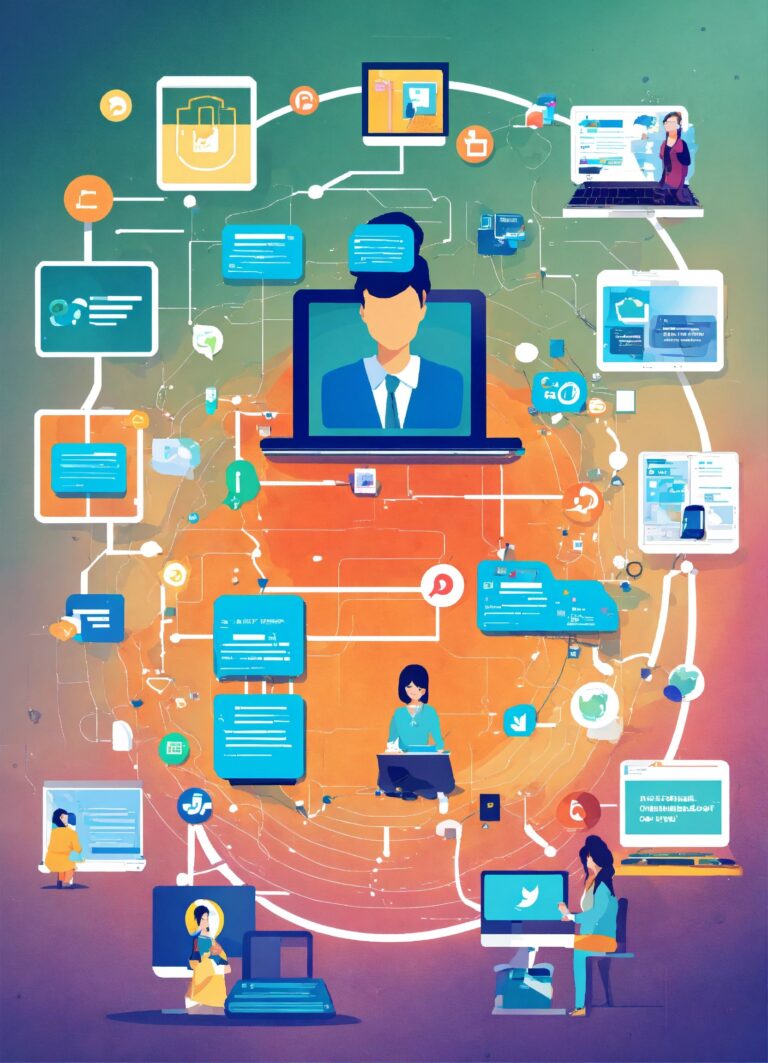Connectivity has transformed the way you manage remote assets through Machine-to-Machine (M2M) technology. By enabling devices to communicate and exchange data autonomously, M2M enhances real-time monitoring, reduces operational costs, and increases efficiency. However, this digital evolution also raises concerns over security and data privacy, necessitating robust frameworks to safeguard your assets. In this post, you will explore the profound effects M2M connectivity can have on your asset management strategies, driving innovation while addressing potential risks.
The Impact of M2M on Remote Asset Management
Definition and Overview
Your understanding of M2M (Machine to Machine) technology is crucial for grasping its role in remote asset management. M2M refers to the direct communication between devices without human intervention, allowing seamless exchange of data and real-time monitoring. This technology is transforming industries by enhancing operational efficiency and enabling predictive maintenance, thus reducing downtime and costs associated with asset management.
Key Components of M2M Systems
Any comprehensive M2M system comprises several key components, including connected devices, communication networks, and data processing platforms. These elements work together to ensure smooth data transmission and effective management of assets over distances.
Components such as sensors, actuators, and centralized management systems form the backbone of M2M systems. Sensors collect data on asset performance, while actuators take action based on that information. Meanwhile, centralized management systems aggregate and analyze data to support decision-making and optimize your asset management processes. Elevated integration of these elements can lead to heightened operational efficiency, enhanced reliability, and improved cost-effectiveness throughout your organization.
Communication Protocols in M2M
Technology plays a fundamental role in M2M systems, where communication protocols facilitate the seamless transfer of data between devices and networks. These protocols ensure compatibility and reliability throughout the communication process, making them important for M2M’s effectiveness.
Systems such as MQTT, CoAP, and HTTP are examples of communication protocols commonly used in M2M environments. Each protocol has its own strengths, such as scalability, energy efficiency, and low latency, which cater to different use cases. Understanding these protocols will enable you to select the right technology stack for your specific application, ensuring optimal performance for your remote asset management efforts.
Remote Asset Management Explained
While the landscape of asset management has evolved significantly with the advent of technology, remote asset management (RAM) stands at the forefront of this transformation. It involves the monitoring, tracking, and management of assets from a distance, leveraging connectivity and data analytics. This practice not only maximizes operational efficiency but also enables your organization to make informed decisions based on real-time data, enhancing overall productivity.
Importance of Remote Monitoring
Monitoring your assets remotely allows for real-time insights into their performance and condition. This ability ensures that any potential issues can be identified and addressed before they escalate, thereby minimizing downtime. Furthermore, effective remote monitoring can significantly increase your operational efficiency by automating routine tasks and data collection.
Benefits of Asset Management Solutions
With the right asset management solutions in place, you can drastically improve your asset visibility and streamline operations. These solutions facilitate proactive maintenance, optimize resource allocation, and enhance decision-making processes driven by reliable data analytics.
This not only leads to cost savings, but you’ll also experience improved asset performance and a reduction in unexpected failures. Additionally, scalable solutions can adjust to your growing needs, allowing you to maintain control as your business expands. Overall, smarter asset management leads to a more resilient and efficient operation.
Challenges in Remote Asset Management
Remote asset management, while advantageous, is not without its challenges. Issues such as data security, connectivity problems, and the complexity of integration into existing systems can arise, posing significant hurdles for your organization.
A major challenge lies in ensuring robust security protocols are in place to protect sensitive information from cyber threats. Moreover, maintaining continuous connectivity is crucial for effective data transmission; any disruption can hinder your ability to monitor assets properly. Additionally, the integration of new technologies with legacy systems may require substantial investment and expertise, representing another hurdle to overcome in your remote asset management journey.
The Role of M2M in Remote Asset Management
After the rapid advancement of technology, Machine-to-Machine (M2M) communication has become a game-changer in remote asset management. It facilitates uninterrupted connectivity between assets and management systems, enabling you to monitor and control your assets like never before.
Real-time Data Collection
Role of real-time data collection in M2M systems is vital for effective asset management. With constant updates on the operational status of your assets, you can make informed decisions that align with your operational needs, thereby minimizing downtime and inefficiencies.
Predictive Maintenance and Analytics
Realtime predictive maintenance is one of M2M’s most significant advantages. Utilizing data analytics, you can identify potential issues before they escalate, allowing you to schedule timely maintenance, thereby protecting your assets and maximizing their lifespan.
Predictive maintenance leverages data analytics and algorithms to forecast equipment failures, providing you with early warnings. This approach not only helps you save on costly repairs but also reduces the likelihood of unplanned downtimes. By maintaining your assets proactively, you ensure they operate smoothly, thus enhancing overall productivity and extending asset lifespans.
Enhanced Security and Compliance
For asset management, enhanced security and compliance are paramount. M2M communication helps you monitor your assets while ensuring that they adhere to industry regulations, safeguarding your investment.
With M2M technology, you can implement advanced security protocols, such as real-time monitoring and data encryption. This not only protects your assets from potential cyber threats, but it also ensures that your operations comply with regulatory requirements. Enhancing your security posture will help build trust with your stakeholders and protect your organization from potentially devastating breaches.
Future Trends and Innovations
Unlike traditional methods of asset management, the future is poised for a significant transformation driven by Machine-to-Machine (M2M) technologies. These advancements will not only enhance operational efficiency but also lead to smart decision-making processes in various industries.
Integration with IoT and Industry 4.0
With the increasing convergence of M2M technology and the Internet of Things (IoT), you can expect seamless communication between devices, facilitating more intelligent asset management solutions. This integration will allow for real-time data collection and analysis, giving you deeper insights into your operations.
Advancements in Connectivity Solutions
Future advancements in connectivity solutions, such as 5G and LPWAN (Low-Power Wide-Area Network), will revolutionize how devices communicate over long distances. Your remote assets will experience improved data transmission speeds, lower latency, and greater device density, ensuring your operations run smoothly and efficiently.
For instance, the introduction of 5G technology will enable the simultaneous connection of countless devices in a specific network area, significantly enhancing the performance of your remote asset management systems. You will benefit from real-time monitoring and control capabilities, allowing for quicker responses to potential issues.
The Future of Remote Asset Management
Future innovations will redefine the landscape of remote asset management, providing you with more robust tools to optimize your operations. IoT technologies, combined with AI and data analytics, will empower you to predict maintenance needs and make informed decisions.
To ensure you stay ahead in this competitive environment, it’s crucial to adopt these emerging technologies. You will not only improve asset utilization but also reduce operational risks. The automation and intelligence these innovations bring will ultimately lead to increased efficiency and a substantial reduction in costs. Embracing these changes will put you at the forefront of remote asset management innovations.
Conclusion
With this in mind, you can see that M2M technology significantly enhances remote asset management processes. By facilitating real-time data exchange and automating decision-making, M2M solutions empower you to monitor, maintain, and optimize your assets more effectively. This not only reduces operational costs but also minimizes risks and improves overall asset performance. Ultimately, embracing M2M can transform how you manage your assets, enabling smarter, data-driven strategies that keep your business ahead in a competitive landscape.




